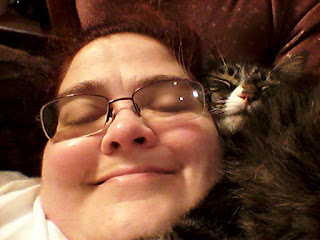Nursing Professional
Practice Model Heart Works a Depiction of Care for the Elderly
Liberty University
The technology in health care has allowed people to live longer and
healthier lives (Grutman, 2016). Medical cures have only advanced so far, and
all people must face physical and mental decline associated with aging. Health
care was centered on curing disease because the lifespan of most adults was
short, due to acute illness (Grutman, 2016). With medicine's well- won victory
against acute disease, the life span has increased but, allotted health professionals
with a new challenge; how to help patients face a problem that is without cure,
aging, Medical professionals encounter the challenge of no longer providing a
cure but assisting the patient in finding meaning and value in the journey of
life! The elderly client encounters the inevitable decline of both physical and
mental health but as described in Jean Watson's caring model, can encounter
healing, hope and understanding through the art of a nurse's care (Ozan, Okumus,
& Lash, 2015).
The
Caring theory by Jean Watson
In Watson's theory healing occurs, through the relationship
between people (Ozan et al., 2015). According to the caring theory it is
inevitable humans are going to encounter conflict, obstacles, and pain during
their lifespan. The relationship that people have with others promotes health
despite no medical cure being available (Ozan et al., 2015). Watson's theory
encompasses a holistic approach to include basic physical needs, needs for
belonging, social engagement, spirituality, and sexuality (Ozan et al., 2015).
The caring theory demonstrates healing can occur through a comfortable, peaceful,
beautiful environment (Ozan et al., 2015). In this medical system, the patient
viewed as a unique individual, part of the family of humankind and the greater
universe (Ozan et al., 2015). The center of this theory is love. Each person
must be accepted as a unique individual that has an important contribution to
give to society (Ozan et al., 2015). In Watson's theory, healing can occur despite
no cure being present (Ozan et al., 2015).
Heart works is a professional practice model that encompasses Watson's
theory, healing occurs through the relationship between the patient and his or
her surrounding world. Leaders use their influence to create a community of
love and respect for patients and staff (Turkel, 2014). This is accomplished
through a shared vision of values and actions and genuine esteem for each
member of the community. It is a false assumption love is a soft skill of
nursing, research confirms applying Watson's theory has successfully; decreased
staff turnover, increased moral, assisted in keeping units on budget, and
improved patient satisfaction and health outcomes (Turkel, 2014).
Watson's caring theory in action creates a paradigm shift within a
business. The leaders care for people first and because of this action, money
follows (Turkel, 2014). Money is a tool not something to accumulate and build a
bigger stronger business but rather a means for the organization to serve a
higher calling of improving the world for everyone (Turkel, 2014). Through
these loving actions, the business becomes strong and profitable. All members
of an organization are encouraged to be authentically present and use their
unique talents to serve the patient and each other. Part of this shift makes
each individual within the community accountable for his or her performance and
resources within the business (Turkel, 2014). This is a shared vision of excellence,
accountability, trust and love. By practicing from common values, authenticity,
shared decision-making, love, caring and peace, individuals are able to use
their unique talents to improve the lives of their patients and themselves,
through creative resource management and innovative caring practices.
Why a professional care model should be used in long- term care
The use of a professional practice model is a new concept in
long-term care and is necessary to improve the quality of the patient services,
and health outcomes to remain financial viable as an organization (Grubman,
2016). The center of the health care professionals' work is love. Changes in the United States government
reimbursement of Medicare and Medicaid
patients from a volume based pay to quality based reimbursement has resulted in
organizations approaching healthcare delivery in new and innovative ways (Grubman, 2016). Long-term
care facilities who fail to create a vision that influences everyone within the
organization, to deliver a high quality; meaningful product will not only fail
economically but, a very vulnerable population.
The professional practice model Heart Works was designed to convey
a vision of how love can transform the care of the geriatric population, a
business, and society, while ensuring economic satiability and future growth.
Caring for the geriatric population is a meaningful and challenging endeavor.
Assisting this population is often difficult as patient have, multiple
diagnosis, chronic illness, frailty, and declining mental state (Grubman,
2016). The geriatric nurse is challenged with maintaining the individuals,
dignity, autonomy and spirit of hope. Despite the patient facing the end of a
journey, which will be fraught with obstacles, dangers and challenges, the
caregiver will assist the patient throughout.
Heart Works is a professional practice model
that has its beginnings from Jean Watson's caring model.
The
Heart Works Professional Care model explained
The first premise of Heart Works
moves past the medical model of sterile institution setting, to a homelike environment,
that promotes physical, mental, and spiritual healing for the resident. As
stated in the work of Watson, a beautiful environment has healing aspects for
the soul of the individual (Turkel, 2014). The environment that one inhabits
can provide hope and comfort that is restorative to the soul. The heart of the
staff has as much to do with the beatification of the home as the building (Turkel,
2014). The staffs, actions and attitude provide the resident with a home full
of peace and love through the relationship of caring. The promotion of
relationships-based care is promoted through consistent assignments and daily rounding
(Grubman, 2016).
The second component of Heart Works is empowerment. The resident's
environment is designed in such a way to empowers the resident to remain safe,
while still maintaining as much independence as possible. Safety is often a
very legitimate concern for the geriatric patient. Falls and injury can result
in death or disability for the resident and a financial risk for the
organization (Turkel, 2014). The empowerment aspect of the Heart Works model
approves of front line staff finding creative and innovative ways to allow
resident to remain as independent as possible in a safe manner. The maintenance
of autonomy allows the resident to age with dignity, while preserving mental
and physical abilities. Studies have shown that long-term care homes that have
leaders who support front line staff in making care decisions for their
patients have decreased staff turnover and increased moral. Increased moral and
decreased turnover, both are associated with improved quality of care, improved
financial outcomes and higher patient satisfaction (Kelly & Tazibir, 2014).
Another component of Heart Works is advocacy. Leadership supports front
line staff in not forgetting the resident's emotional needs in the task of
everyday activity (Ozan et al., 2015). Front line nurses are empowered to make
decisions that will support each resident as an individual. This advocacy is
accomplished through the development of a meaningful relationship between the
staff and resident. The staff uses this relationship in a therapeutic manner to
advocate for care that is of meaning and value to the patient (Ozan et al.,
2015). An emphasis is placed on the wellbeing and quality of life for the patient.
The staff member also receives curative factors because of the relationship
they have with the client and being part of humankind (Turkel, 2014).
The Heart Works model places an emphasis on the patients maintaining
meaningful relationships with their families, staff and communities. Research
has proven that meaningful relationships have a protective component to health
(Ozan et al., 2015). People that have strong ties to their community are
healthier and live longer, more productive lives (Grubman, 2016). The Heart
Works model puts an emphasis on including the family and the community in the
lives of the patients. Leaders create a vision where the family is part of the
care team assisting the client on their life journey (Grubman, 2016). The
resident is encouraged to engage in a community created in the residents' home environment,
which meets spiritual, intellectual, artistic, social and physical needs of the
patient.
The next components of the Heart Works model of care are, trust, working
together and ownership of one's role in caring for the geriatric resident. The
elderly population is one of the most vulnerable populations in society (Vaugh
et al., 2016). The families of residents in long-term care facilitys have
entrusted caregivers with their loved ones. As discussed in Watson's theory,
trust begins with the character of the individual (Grubman, 2016). In the Heart
Works model, each person takes responsibility to develop a character of
honesty, love and reliability. Individuals within the organization are
accountable for the work they perform. Leaders through trust, create an
environment where staff can function to the full capability of their role in
the organization (Vaugh et al., 2016). Managers portray confidence and trust
that the staff will meet and exceed expectations. Research has demonstrated that managers that
trust and have confidence in their employees have stronger teams and higher
quality of care (Kelly & Tazibir, 2014). Everyone within the organization
understands that all that is accomplished is through the talents, skills and
efforts as a team.
The final components of the Heart Works model of care are respect,
kindness and service to residents and each other. Watson's theory states that
kindness begins with loving and caring for oneself (Grubman, 2016). This love
overflows into the people around us. We respect everyone's individual talents
and contribution to humankind. Through this love, a person makes their own
contribution to the world and values everyone else's (Grubman, 2016). The
manifestation of kindness and respect for others is demonstrated with quality
patient care. This is accomplished through the service to the residents and
each other. The power within the organization is shared to create a better life
and world for everyone.
Evaluation
of the professional practice model
The hallmark of an effective professional care model places the patient
as its highest priority (Slayers, 2016). A professional practice model should
identify environmental characteristics that support, encourage and strengthen
nursing practice (Meehan, 2012). Furthermore, the model should allow nurses to
reach their highest potential (Slayers, 2016). The professional care model
should assist nurses in taking responsibility for their practice, while combining
the art of nursing with the clinical aspect of patient care (Meehan, 2012). To
appraise a professional practice model an organization should determine if the
model is in line with the values and goals. In addition, the evaluation of the
model should include improvement in patient safety, customer service scores,
quality of care, staff retention, nursing's professional roles and patient
health outcomes (Slayers, 2016). The model should also emphasize collaboration
of all disciplines within the health care environment. Effective professional
care models also empower front line staff to participate in clinical decision
making within their organizations and close the gap between nursing practice
and science (Meehan, 2012). Finally, an effective nursing care model should be
relevant to their area of practice and assist in helping the nurse face
challenges encountered during care (Meehan, 2012).


